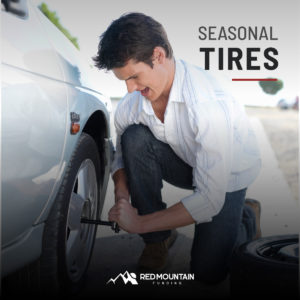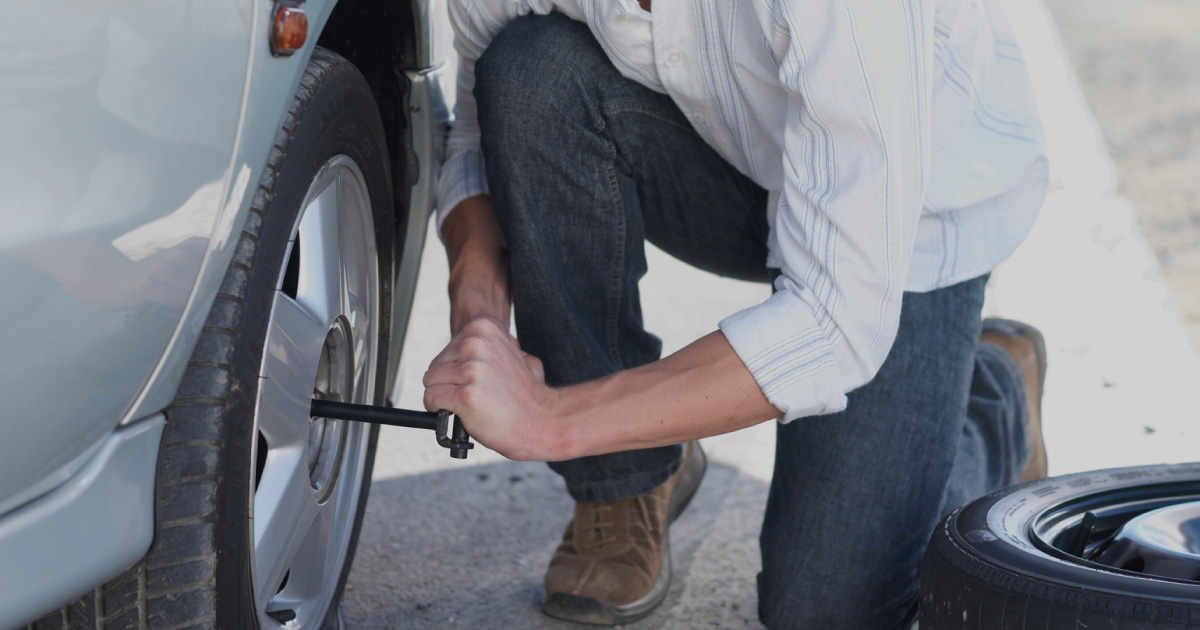Disclaimer: Some links on this page are affiliate links. We may receive a commission if you make a purchase through these links. See our full disclaimer here.
It doesn’t matter what time of year it happens. You could be on the way to the grocery store, picking up the kids from school, or on the I-17 freeway heading north going 75 miles per hour at 3:43 pm hoping to beat the afternoon rush hour traffic. And then, out of nowhere, boom! You hear that thud, thud, thud every second or so with the tire rotation as the point of contact churns over on the asphalt and that’s when you know – you’ve got a flat. But here’s the reality of the situation. Unless you’ve run over a nail or screw (thanks to the good economy and new construction), neglect or poor maintenance may have a hand in time spent at the side of the road. Prevention is key, and knowing whether seasonal tires in Arizona are the best option all year round is worth a discussion.
Tread Lightly and Carry a Big Wallet
One of the more frustrating aspects about having to replace a tire is that it’s never just one tire. Unless, you’ve had the unfortunate circumstance of replacing two or four tires at once and then getting a flat within a short amount of time after that, getting one new tire puts you and your vehicle at risk. It’s all about the tread. But how a tire wears during the extreme temperatures in an Arizona summer are very different to what’s important during a trip to Sedona or Flagstaff in January. We’re talking polar opposites here. So how do you determine which tire is best without blowing your bank account to shreds?
Smaller Tire Investment Equals Short Term Fix

The best tires for your vehicle, should you drive in Phoenix, its surrounding areas, Tucson or in the high country near the Rim, require a multitude of must-haves in order to preserve the life of the car or truck and better ensure your safety on the road.
What to Consider When Buying Tires in Arizona
- Frequency of use
- Expected length of ownership
- Type of vehicle
- Car, SUV or Truck
- 4WD, 2WD, FWD, AWD
- High performance or standard
- Weather conditions
Many people are quick to think that because Arizona doesn’t really have four seasons in the sense that other areas of the country do, tire tread doesn’t undergo the challenges that the Northeasterners or Midwesterners go through. This is a misnomer. Ever notice how many pieces of once-perfectly-good-rubber meets the road to its-death on Arizona freeways from May through September? Heat plays a dire role on the health of tire tread, which is why an all season tire in Arizona carries a lot of merit.
As a rule of thumb – less cost means less tread and that’s a dangerous choice.
One Tire Replacement Really Means Two
Not all tires will wear the same. The front tires are often thrown out of alignment from banging a curb or two. (Who does that?) Misalignment and imbalance will put additional stress on all the tires, accelerating wear and tear.
Even if only one tire needs to be replaced, say the front tire, to keep all tires working optimally and providing the most stability and life of the tires, two tires (one for the right side and one for the left) will need to be replaced. In addition, both new tires should be placed in the rear (if possible) as they affect overall stability.
Not All Tires Are Created Equal
When choosing between an all season tire and a winter tire, there’s a fine balance in determining how much grip you’re getting for the price. Often times, when looking for tire replacements, it’s easy to get enamored by the brand name or intricate groove patterns on the rubber.
What is important to take note of in winter and seasonal tires include:
- Speed rating
- Size
- Brand
- Warranty
- Life expectancy*
Just because your first set of tires had a life expectancy of 50,000 miles, doesn’t mean that all tires carry the same longevity. Some are 20,000 miles. It depends on how long you plan on owning the vehicle and how often you drive.
It’s also important to stay with ‘of like kind’. When possible, replace an existing tire with the same make, model and size of the other tires. If you want to change the brand or model, talk to a tire specialist who can match size for size and performance metrics. Weigh the cost for replacement and the tire life expectancy to map out whether a change from the original is worth it long term.
For Arizonans, the decision on which tire is the right buy is based on many variables.
To Buy All Season or Winter Tires in Arizona, What’s the Answer?
One of the best aspects of living in or visiting Arizona is the diversity of terrain and temperature. If you plan on hitting the slopes during the winter and spring seasons, the right tire is essential to ensure that the rubber meets the road optimally no matter the situation (snow, sleet, ice, dirt).
Unless your pocketbook has an endless supply of disposable funds, an all season tire is the way to on the road bliss in Arizona, providing the right amount of traction in a variety of conditions for the long haul. There are even performance all season tires for higher end vehicles such as BMW, Porsche, Ford Mustang, and Audi TT or R8, just to name a few.
Top 5 Recommended All Season Tires
1. Cooper Discoverer A/T3
2. BF Goodrich Rugged Trail T/A
3. Michelin Primacy MXM4
4. BF Goodrich g-Force COMP-2 A/S
5. Hankook Optimo H727
Before You Buy Any Vehicle, Make Sure to Look at the Tires before Purchasing
I’m a kid at heart disguised as an auto researcher and business owner. I’ve always enjoyed providing insight in the form of reviews (anime, video games, autos, etc.) When I’m not researching, I’m spending time with my family, driving my Dodge Challenger, riding my motorcycle, and finding new entrepreneurial pursuits.


